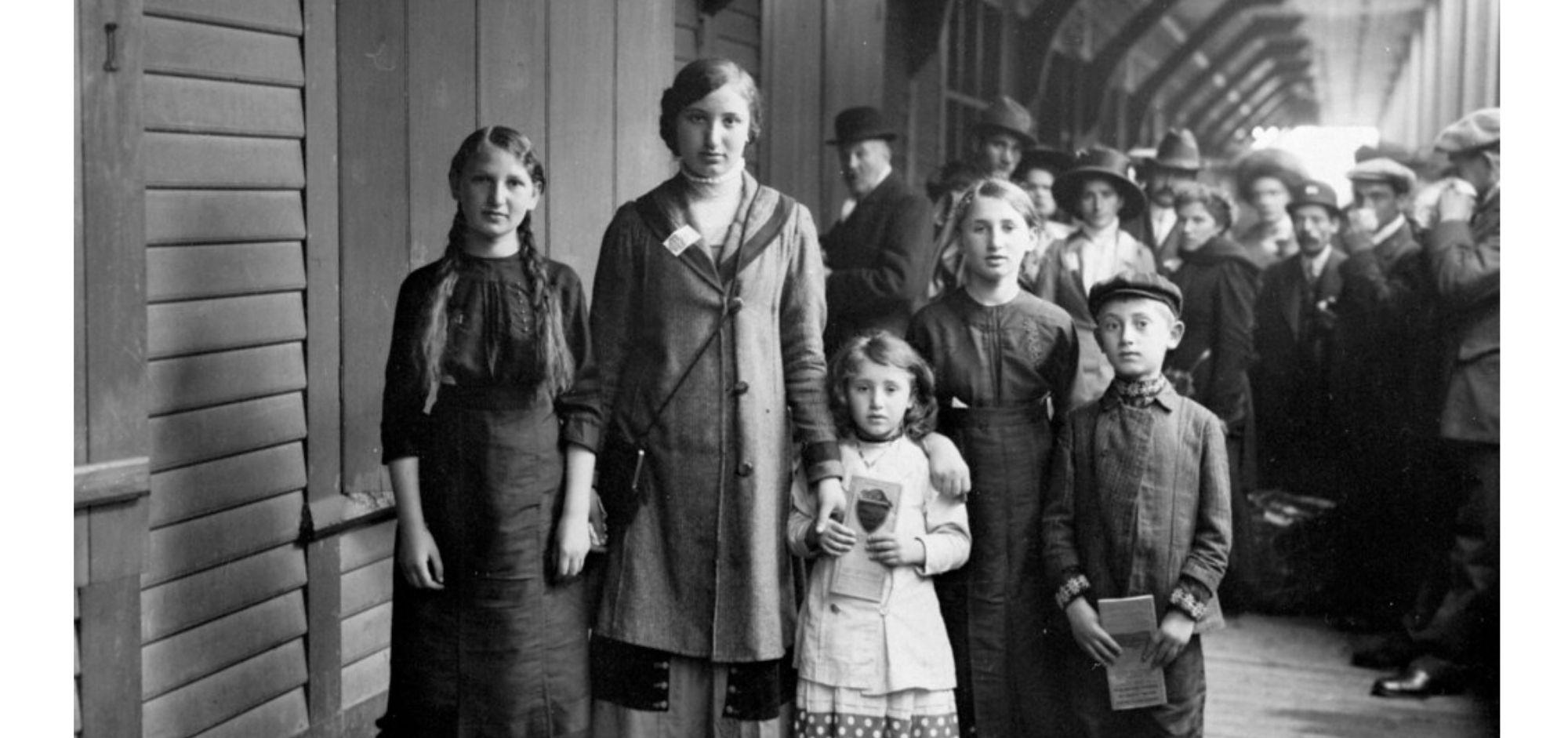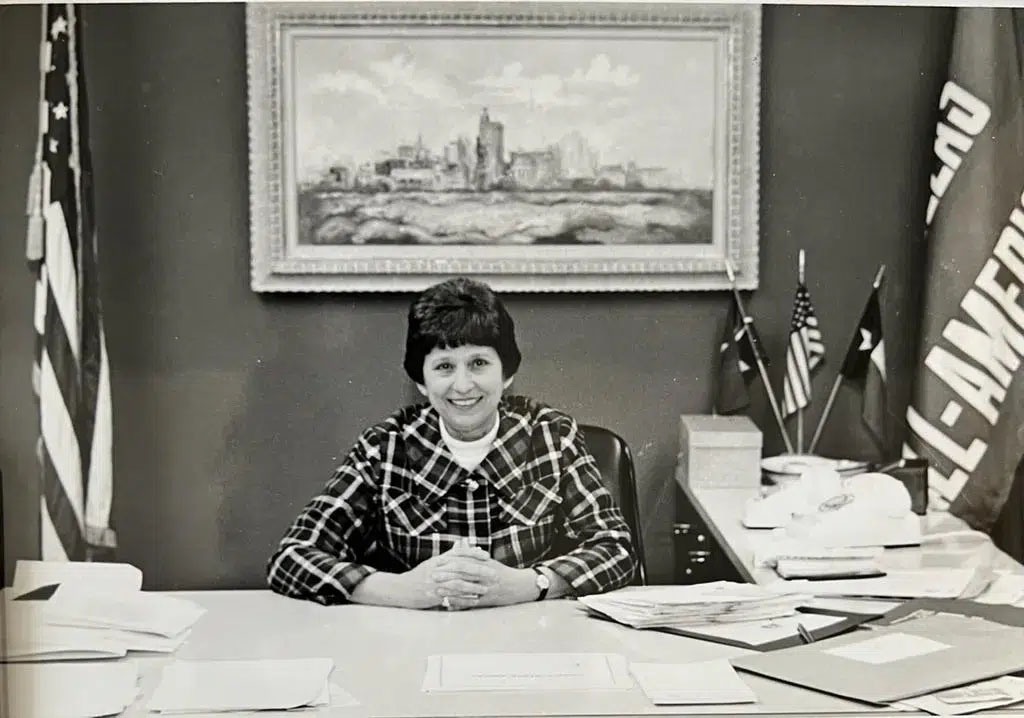
JAHM Texas Stories
Week 1 - May 1
From 1579 to Today: Six Facts About Jewish Life in Texas You Might Not Know
Jewish history in Texas is deeper and more expansive than you may realize. From early migration patterns to civic leadership, Jewish Texans have played a significant role in shaping the Lone Star State’s past, present, and future.
Here are six facts that highlight that legacy:
- Decades before the Pilgrims arrived in Massachusetts, Jewish settlers made Texas their home. Known as “hidden Jews” or Crypto-Jews, these settlers fled persecution in Spain and traveled with Spanish conquistadors to seek refuge in a new land. While outwardly professing adherence to another religion, Crypto-Jews brought the Jewish faith to the New World, practicing Judaism in secret to avoid further persecution.
- Luis de Carvajal y de la Cueva, a Portuguese-born officer of the Spanish Crown, was the first Governor of Nuevo Reino de León (present-day northeastern Nuevo León, Mexico) with a land grant that extended into what is now Texas. He was also a Crypto-Jew. His nephew, Luis de Carvajal the Younger, penned the earliest surviving manuscript by a New World Jew before being burned at the stake in 1596 for observing Jewish practices. Lost in the 1930s but recently rediscovered, de Carvajal’s historic narrative is again housed in Mexico’s National Archives.
- Jewish Texans were fighters for Texas independence. During the Texas Revolution of 1835-36, Jewish Texans participated in some of the revolution’s most famous battles, including the Battle of Goliad, the Battle of the Alamo, and the Battle of San Jacinto.

- Between 1907 and 1914, Galveston became a major port of entry for Jewish immigrants. The Galveston Movement redirected thousands of Jewish refugees coming from Eastern Europe from New York to Texas.

- The oldest synagogue building still in operation is the historic B’nai Abraham synagogue. Originally built in 1894 in Brenham, this building was relocated by transport truck a decade ago to Austin, Texas, where it is home to Tiferet Israel, a modern orthodox congregation.
- Iconic Texas-founded companies like Neiman Marcus, Zales Jewelry and Dell trace their roots to Jewish entrepreneurs.
To view week 1 carousel.
Week 2 - May 8
Jewish Roots in the Lone Star State
Jewish American Heritage Month honors the contributions of Jewish Americans across the nation -- including in Texas. These are some of the historic firsts and milestones in Texas Jewish history.
1852: The First Jewish Ceremony in Texas
The earliest recorded Jewish ceremony in Texas was a burial in Galveston. In the 1840s and 50s, the Jewish population in Southeast Texas grew to form small community. When a Jewish child in Galveston died in 1852, a rabbi was called in from New Orleans to preside over the solemn burial and dedicate the first Jewish cemetery in Texas. Jewish cemeteries soon followed in other key Texas cities:
- Houston (1854)

Jewish Cemetery in Jefferson - San Antonio (1856)
- Victoria (1858)
- Jefferson (1862)
1859: First Synagogue in Texas
Houston’s Congregation Beth Israel was chartered in 1859 and began as an orthodox synagogue with twenty-two members, many from western Europe. The congregation gathered in a former house that was converted to be their place of worship. In 1874, the same year construction on their first temple building was completed, the congregation voted to change their affiliation to join the emerging Reform movement. Congregation Beth Israel continues to be a vibrant Reform Jewish congregation in Houston today.
1870: Oldest Synagogue Building in Texas
Congregation B’nai Israel’s structure in Galveston still stands today—it’s the oldest synagogue building in the state. Designed by local architect Fred Stewart, the synagogue stood out not only for its beautiful Gothic style and Moorish architectural elements, but also as a spiritual beacon for thousands of Jewish immigrants embarking upon their American journey through the port of Galveston. The synagogue was sold to a Masonic lodge in 1955 and remains a fixture of the Galveston community today.

2015: Relocation of Historic Synagogue
The first B’nai Abraham Synagogue was built in 1892 but destroyed in a fire that same year. The second building still stands today, albeit in a different city. B’nai Abraham Synagogue served the needs of Orthodox Jewish settlers in Brenham, Texas beginning in 1893. By the end of the 20th
century, as Jewish populations migrated to larger cities, the Brenham synagogue’s congregation dwindled in number. In 2015, the historic building was cut into three sections and relocated 90 miles to Austin. The building was preserved and repurposed by Congregation Tiferet Israel, again serving Jewish Texans under the new name of B’nai Abraham Brenham Historic Synagogue.
TODAY
Now home to 250,000 Jews, Texas boasts a vibrant and growing Jewish community—especially in Dallas, Houston, Austin, and San Antonio—with diverse synagogues, multiple mikvahs, and kosher eateries.
To view week 2 carousel.
Week 3 - May 15
Community Near and Far: How Jewish Texans Planted Roots
Many of the first European Jews who migrated to Texas fled the Russian and Polish pogroms to settle in small Jewish communities throughout the state. As more

Jews arrived, they reconnected with one another and found success and strength in community.
In 1816, the De La Porta Brothers, Portuguese Jews living in New Orleans, helped finance the European Settlement on Galveston Island, which would become a major Texas seaport.
As railroads transformed Texas in the late 1800s, many small Jewish communities sprang up along these rail lines. With them came small, Jewish-founded businesses that grew into beacons of industry, including the Sanger Brothers Dry Goods Company, Neiman Marcus, the K. Wolens department store, and Zales Jewelry.
Rabbi Henry Cohen, originally from London, was the Galveston Rabbi for over 60 years—from 1888 to 1949—and was the first researcher to write about Jewry in Texas. He welcomed and helped settle thousands of Jews in Texas.

In 1855, Houston’s Jews formed the first recorded Texas institution, the Hebrew Benevolent Society, to benefit members of their “church” suffering "pecuniary or physical distress.”
Several Jewish newspapers have kept Texan Jews in touch with one another. These include The Jewish Herald-Voice, established by Edgar Goldberg in Houston in 1908, and The Texas Jewish Post, established by the Wisch family in 1947.
Zionism has a long history in Texas. The Texas Zionist Association was formed in 1905 to coordinate Zionist efforts statewide.
To view week 3 carousel.
Week 4 - May 22
Jewish Leaders Who Shaped Texas: 7 Influencers You Should Know About
Jewish Texans created a civic and philanthropic presence in Texas before Texas gained independence from Mexico, and they continue to play a vital role in Texan institutions today.
Some important Jewish Texans you might not know about are:
Albert Moses Levy, a Jewish immigrant from the Netherlands, served as surgeon-in-chief of the Texan volunteer army and was honored for helping to fight for Texas independence.
Michael Seeligson, who also came to Galveston in 1838, quickly became a town alderman and was elected mayor in 1853. In a letter to the national Jewish newspaper, the Occident, Seeligson explained that he ran for mayor to “thwart the designs of a certain clique” who had been speaking out publicly against Jews. Seeligson’s comments indicate that while there was a degree of antisemitism in early Galveston, the town’s Jews were willing and able to confront and defeat it.
Rosanna Osterman of Galveston set up a temporary hospital during the 1853 yellow fever outbreak and served as a Civil War nurse in the 1860s.

Ben Taub, the chairman of Jefferson Davis Hospital for almost 30 years, was also a prominent businessman, donated land to serve as a permanent campus for the University of Houston, and served on the boards of 23 philanthropic and civic organizations. Houston’s Ben Taub General Hospital is named for him.
Robert Schwarz Strauss was a prominent political player, policymaker, and lawyer. Served in LBJ’s first congressional campaign, becoming an essential Democratic politician, eventually serving as the chair of the DNC, Jimmy Carter’s special envoy to the Middle East, and the last U.S. ambassador to the Soviet Union. Additionally, Strauss founded a law firm in 1945, now with offices in 15 cities.

Adlene Nathanson Harrison was the first Jewish woman to serve as mayor of a major U.S. city. She became Dallas’s acting mayor in 1976.
Michael Dell is the founder, chairman, and CEO of Dell Technologies, one of the world's largest technology infrastructure companies. Since 1999, he and his wife, Susan have contributed over $2.8 billion to charity through their family foundation.
